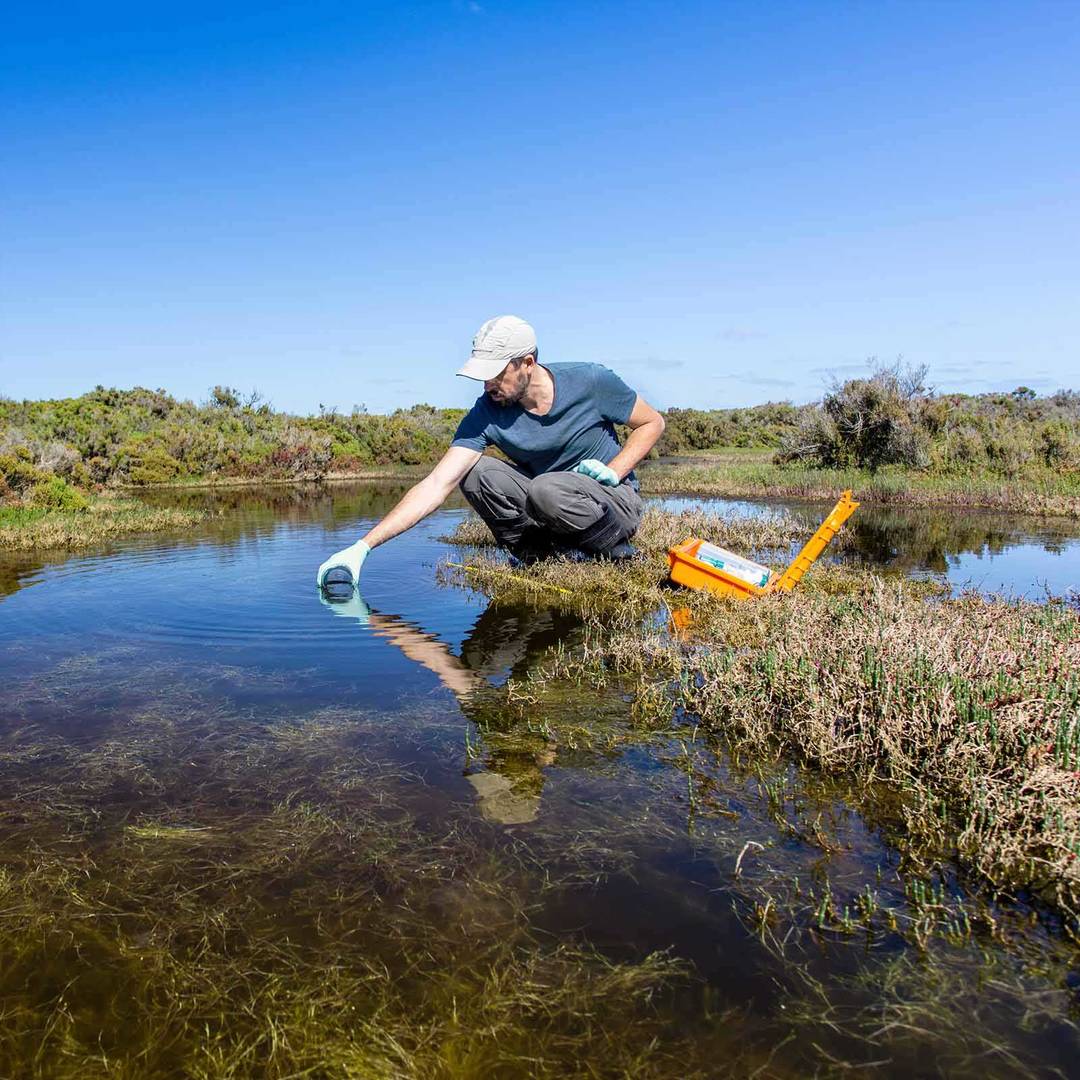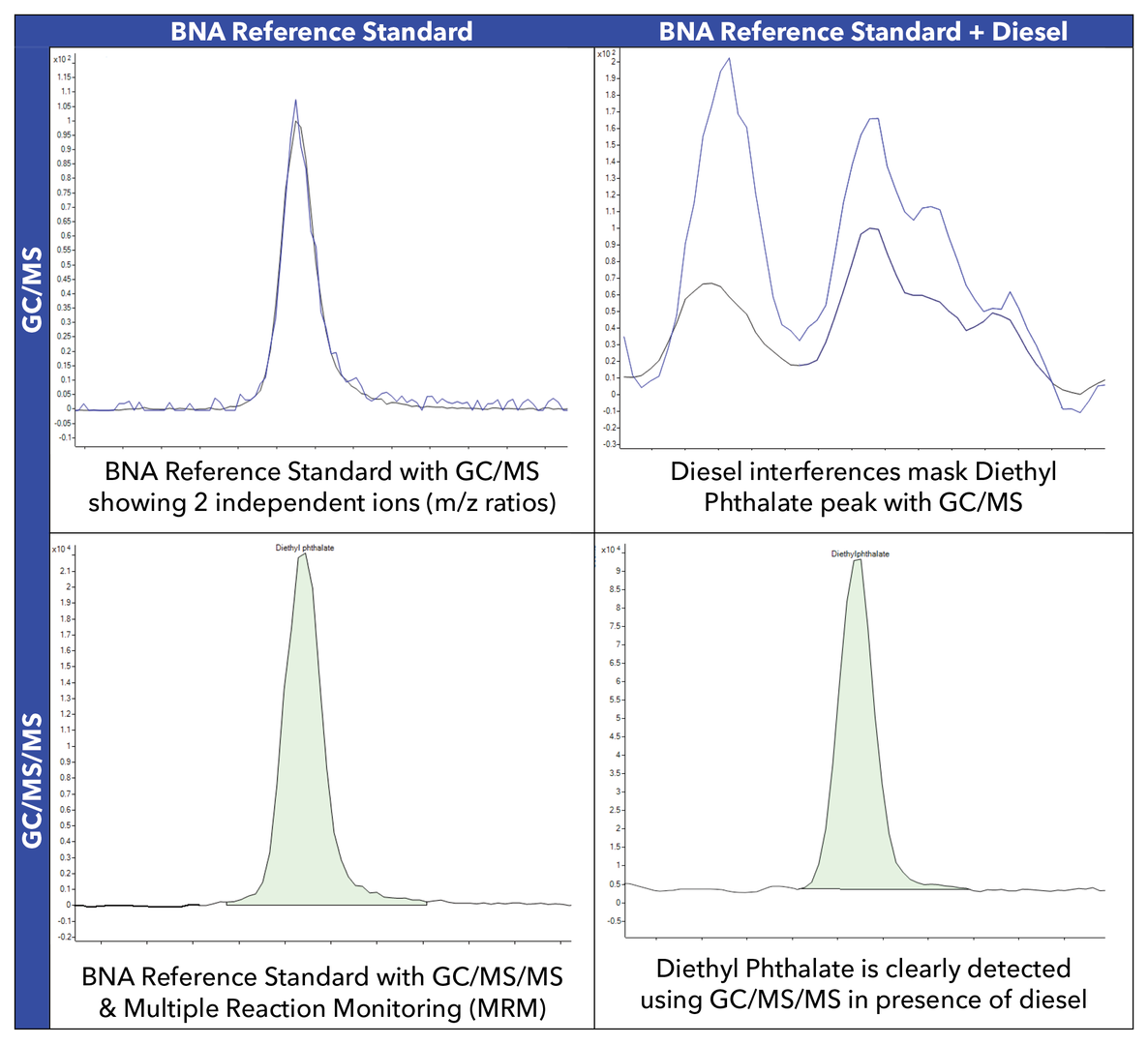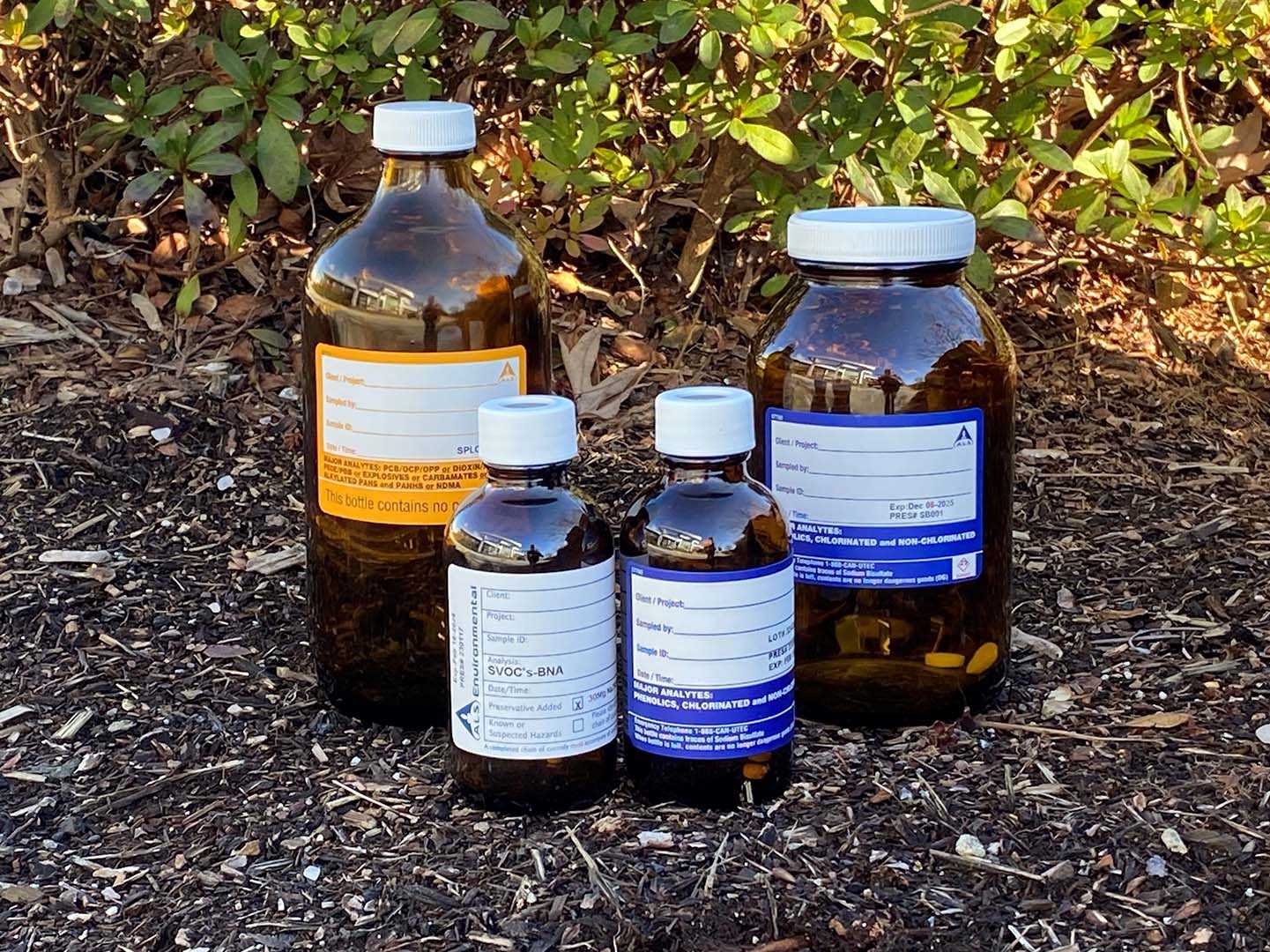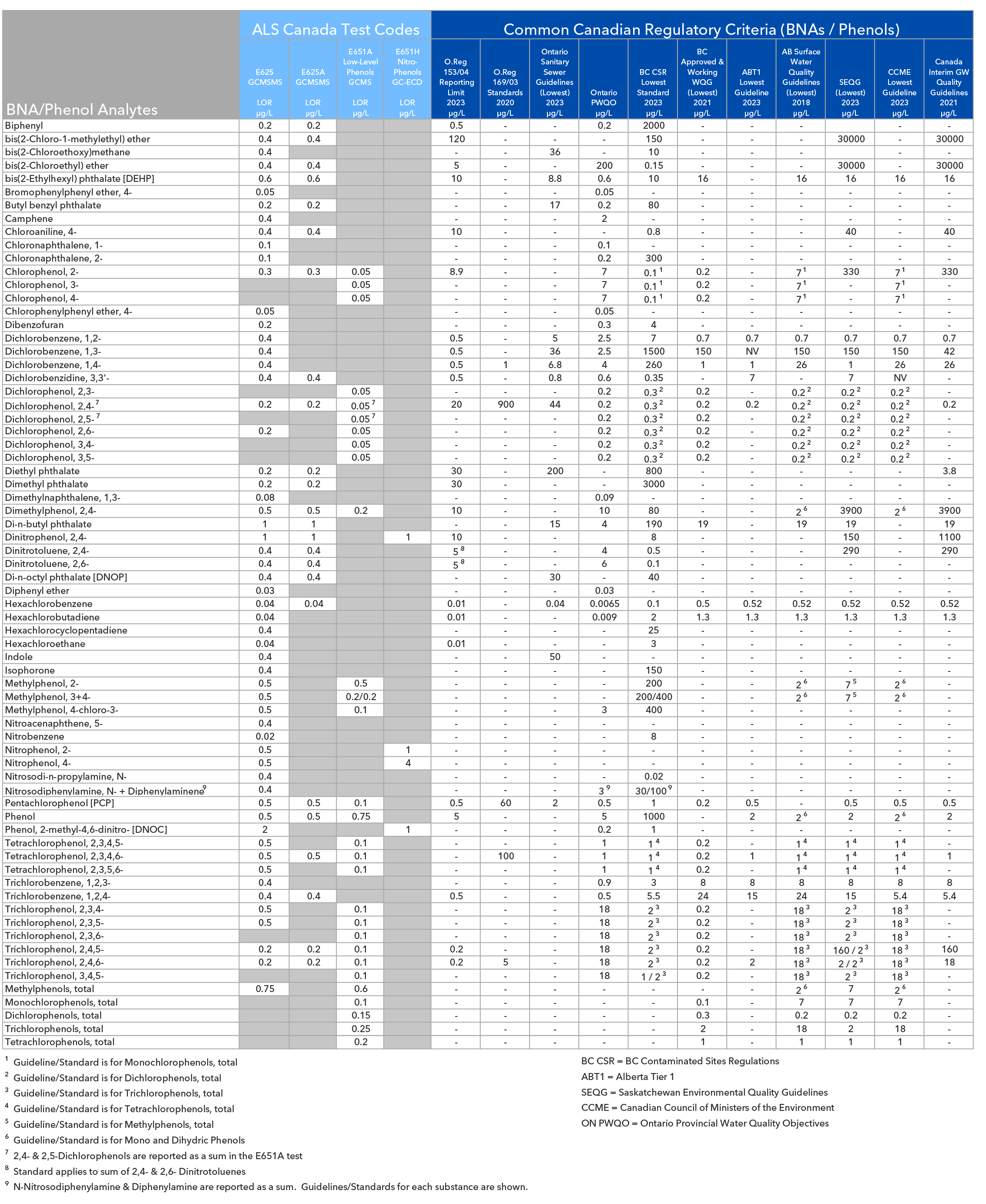EnviroMail 55 Canada
Sampling and Data Quality Improvements for BNAs/Phenols with 100 mL Water Samples
As the next stage in the ALS journey of sample size reduction leadership, water testing for BNAs (Base/Neutral and Acid Extractable organics) and Phenols now use 100 mL samples, greatly simplifying field sample collection and logistics versus previous 500 mL sample requirements.

BNAs represent a diverse group of semi-volatile organic compounds (SVOCs) which include chlorobenzenes, chlorinated and non-chlorinated phenols, phthalates, and other miscellaneous SVOCs. Most of our new ALS BNA tests will be conducted using GC/MS/MS triple quadrupole instrumentation, which provides genuine data quality improvements as well as enhanced sensitivity.
Sampling & Sustainability Advantages of 100 mL Samples
Greatly reduced sample size brings substantial advantages to field samplers. Smaller samples can be collected faster and at lower cost, with significant weight reduction - simplifying manual handling and reducing potential for strains and HSE risks while transporting heavy sample coolers. For groundwater sampling, smaller sample volumes are more compatible with low flow sampling, and can help to minimize well disturbance, reducing the collection of entrained solids which can contribute to bias or false positives (see EnviroMail 21). Reduced sample size also contributes to broader sustainability gains, including reduced impacts from consumable waste, transport, and from greatly reduced use of solvents in the lab. Reduction of sample sizes throughout all our testing regimes is a key component of the ALS goal for carbon footprint reduction, and a cornerstone of our commitment to Net Zero.

Figure 1. Interference Effects on GC/MS vs GC/MS/MS
GC/MS/MS Data Quality Improvements
In addition to reduced sample size, two of our new ALS BNA tests also introduce data quality improvements with the adoption of GC/MS/MS triple quadrupole analytical instrumentation. In comparison to traditional single quadrupole GC/MS, a GC/MS/MS “triple quad” provides greater sensitivity, but also introduces enhanced selectivity through the use of Multiple Reaction Monitoring (MRM). With MRM, two independent stages of mass-based detection are required to measure each targeted analyte; a substance is detected only if the correct precursor ion can be generated and isolated in a first spectrometer stage, and where that precursor ion can be further fragmented to a specific secondary ion in a second spectrometer stage. Detection using highly selective MRM transitions virtually guarantees the correct identification and accurate quantitation of each targeted analyte. GC/MS/MS is very effective at reducing interferences that can sometimes occur in complex sample matrices with single quadrupole GC/MS, as illustrated in Figure 1 (showing potential interferences on Diethyl Phthalate by diesel). Our extended and short-list BNA test codes now use GC/MS/MS. Our low-level Phenols and Nitrophenols tests currently use GC/MS and GC-ECD respectively, but will also be transitioned to GC/MS/MS in the coming months.
Test Code and Sample Collection Details
The test codes offered for our new BNA and Phenols methods are shown in Table 1, together with test descriptions, sample preservation, and hold times. All samples should be chilled to ≤ 10°C with ice or ice packs prior to shipment to the laboratory.
Table 1. Test and Sample Collection Details
| Test Code | Test Description | Analysis | Sample Containers & Preservation | Hold Times |
| E625 | BNAs/Phenols (extended list) | GC/MS/MS | 2 X 100mL amber glass with sodium thiosulfate (Na2S2O3 solid) | 14 days (Ontario); 7 days (CCME, all other provinces/territories) |
| E625A | BNAs/Phenols (short list) | GC/MS/MS | ||
| E651A | Full-List Chlorinated & Non-Chlorinated Phenols (low-level) | GC/MS | 2 X 100mL amber glass with sodium bisulfate (NaHSO4 solid) | 14 days |
| E651H | Nitrophenols only | GC-ECD | 14 days |

Figure 2. New 100 mL bottles versus old 500 mL bottles
Comparison to Canadian Regulatory Criteria
The most common Canadian standards and guidelines for BNAs (including Phenols) are shown below in Table 2, together with the parameters and Limits of Reporting (LORs) offered with these new and improved tests. Broad groupings of BNAs can be analyzed with test codes E625 and E625A, and are particularly intended to meet common Ontario regulatory requirements (including Reg 153, Reg 169, and sanitary sewer discharge testing). Testing for Phenols to the lowest levels required for BC, Alberta, Saskatchewan, and CCME uses our Low-Level Phenols test code E651A. If required, Nitrophenols can be added to the E651A test code using the same set of sample containers. ISO 17025 accreditation is currently in place for these tests. Please refer to the CALA scopes of accreditation for ALS Waterloo (E625 & E625A) and ALS Vancouver (E651A & E651H) for current accreditation status.
Please contact your ALS Project Manager with any questions, or to arrange for sampling supplies.






















































